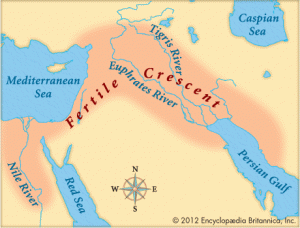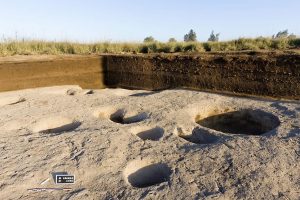What Does The Term ‘Neolithic’ Refer
The term ‘Neolithic’ refers to a specific cultural timeline in pre-history. The term ‘Neolithic’ comes from two words; ‘neo’, meaning new & ‘lithic’, meaning stone. That is why this time period is sometimes referred to as the New Stone Age.

The Neolithic cultures constitute the concluding phase of the Stone age. These cultures are characterized by the use of polished & ground tools, the pottery & the emergence of the practice of plant cultivation & animal domestication leading to the growth of farming communities & a settled village life.
The Neolithic Culture of Egyptian Land
The Neolithic period began around 12000 years ago in the world context. It came to an end as civilizations started to flourish around 3500 BCE. This period is commonly associated with the transition from hunting-gathering communities to agricultural settlements.
It was around 6000 BCE when the land of the modern day Egypt witnessed the Neolithic period. According to the studies based on the till now available archaeological, morphological & genetic data, the Neolithic settlements came to an existence through the hands of the migrants from the Fertile Crescent region in the Near East.

For the sake of study, Neolithic cultures of Egypt can be divided into two segments: Neolithic cultures of Lower Egypt & Neolithic cultures of Upper Egypt. The Neolithic cultures of Lower Egypt are Faiyam A culture, Merimde culture, El Omari culture, Maadi culture etc. The Neolithic cultures of Upper Egypt are Tasian culture, Badarian culture, Naqada culture etc.
The Site of Tell-el-Samara: Location
The site of Tell-el-Samara that is going to be discussed here is located in the northern province of El-Dakahila, around 90 miles north of Cairo, the capital of the modern day Egypt.
The Discovery of A Neolithic Settlement
According to the Ministry of Antiquities, Egypt, a joint archaeological mission of Egyptian & French archaeologists led by chief archaeologist Frederic Gio, discovered the traces of a Neolithic village settlement in the site of Tell-el-Samara during the middle of the year 2018.

Antiquity of The Site
This new discovery has been attributed to be one of the oldest known villages in the Nile Delta. According to the Ministry of Antiquities, this new Neolithic site revealed the evidence of human habitation as early as 5000 BCE. This habitational remains dated back to before the period of pharaohs.
Evidence of Habitation
Archaeologists uncovered several storage silos which contained organic matter; animal bones, plate residues etc. Apart from these, they also found a number of stone tools & pottery. All these shreds of evidence indicated that this site was used to be the habitat of the Neolithic people of this area.
The organic materials were analyzed in the initial dating of the site. Further investigations will unfold more information to understand the cultural material of this site.
Importance of The Discovery
Before the beginning of the pharaonic period, it was the prehistoric cultures that shaped ancient Egypt. These type of discoveries will give researchers an opportunity to study the prehistoric period of Egypt more deeply & understand the importance of the first farming communities who inhabited in the Nile Delta region.